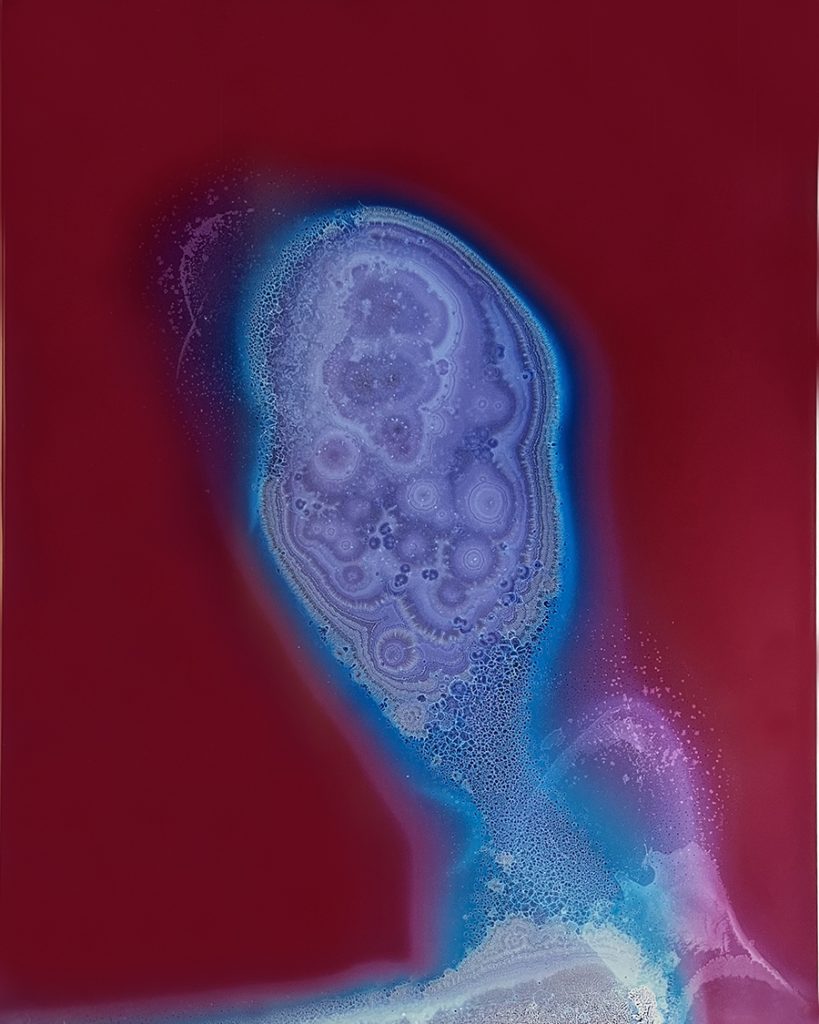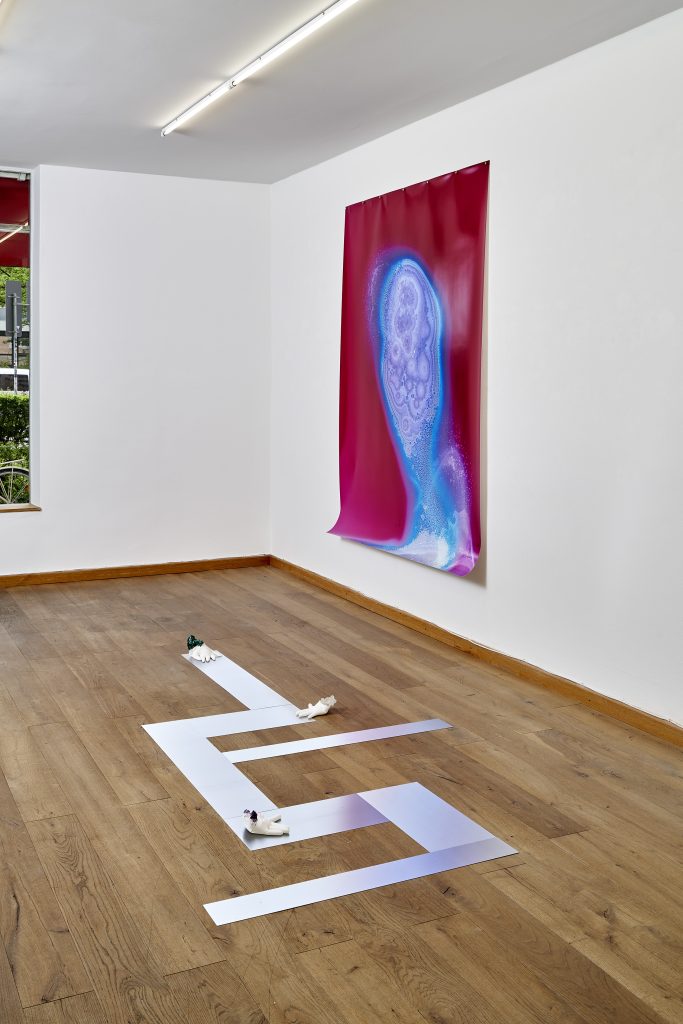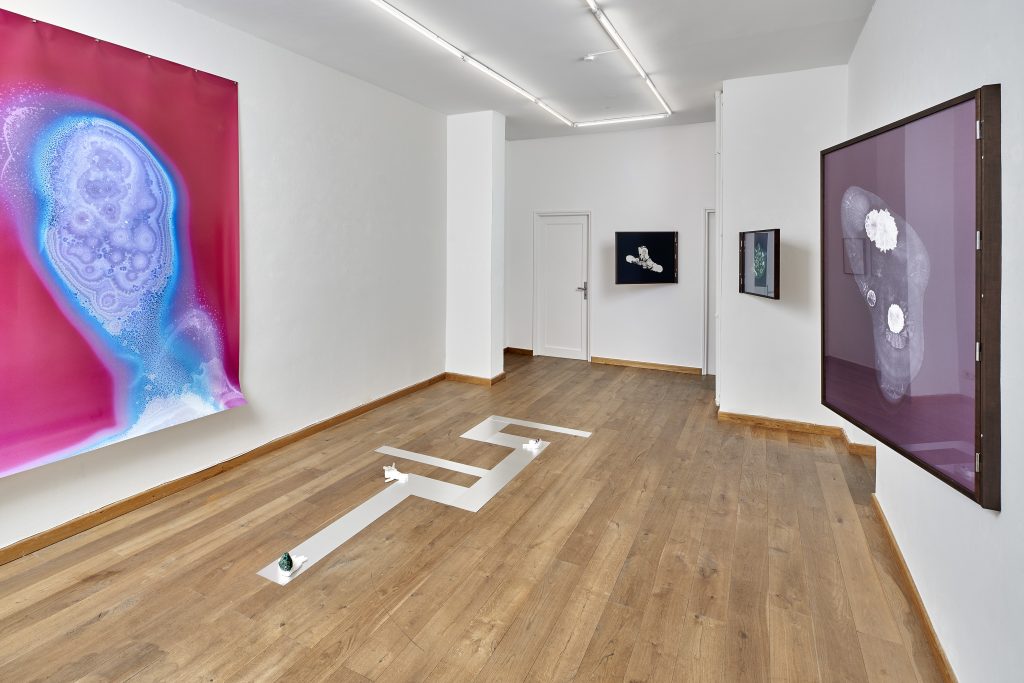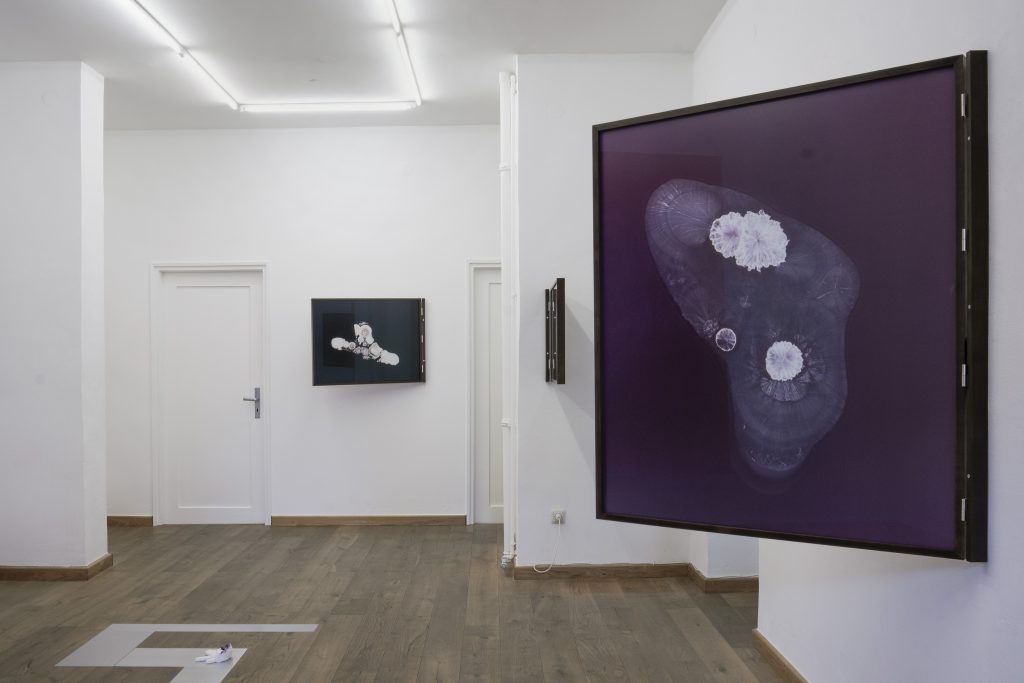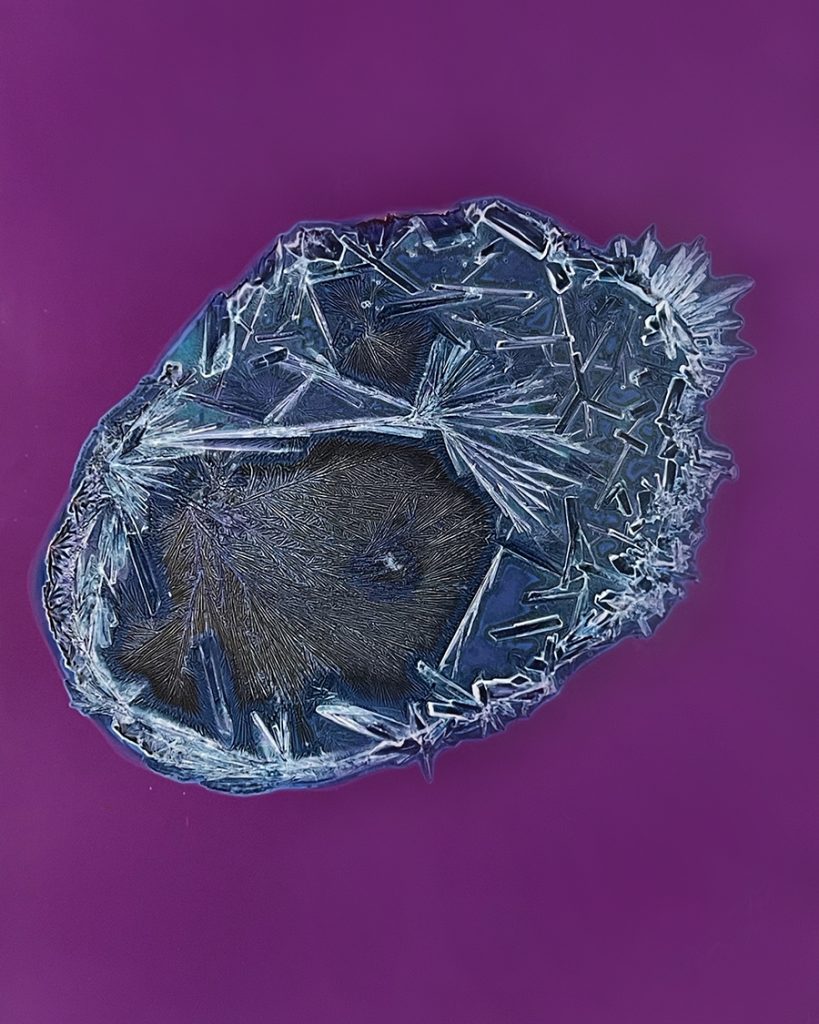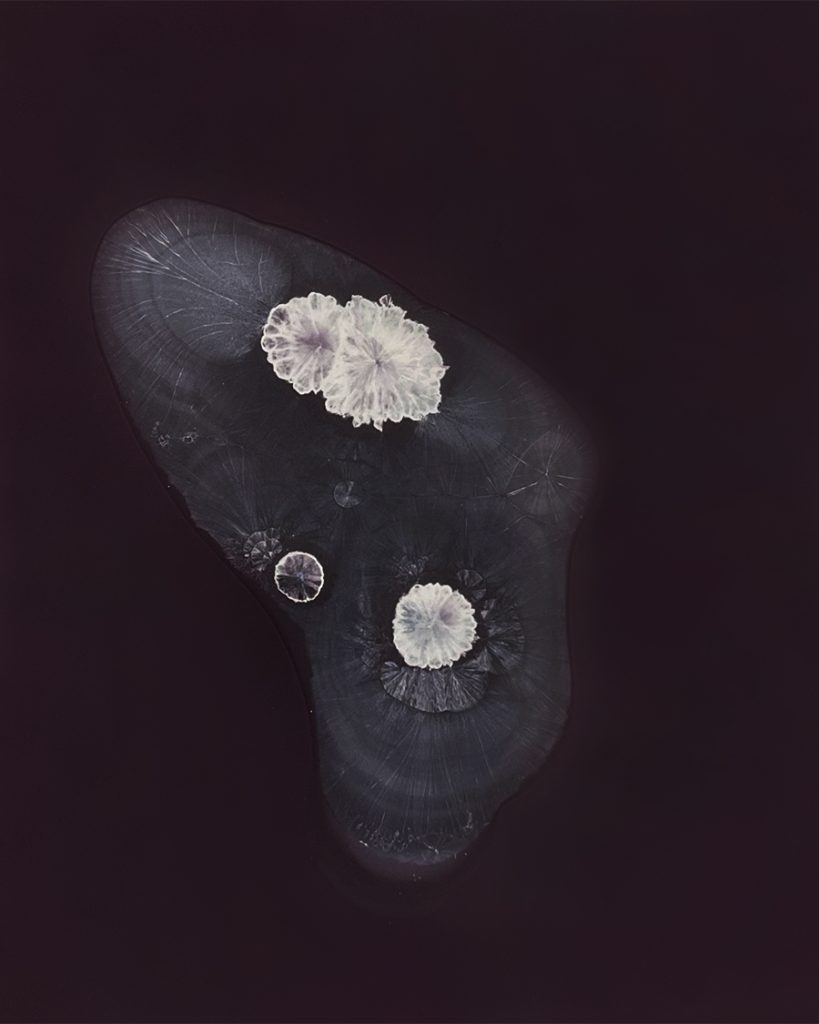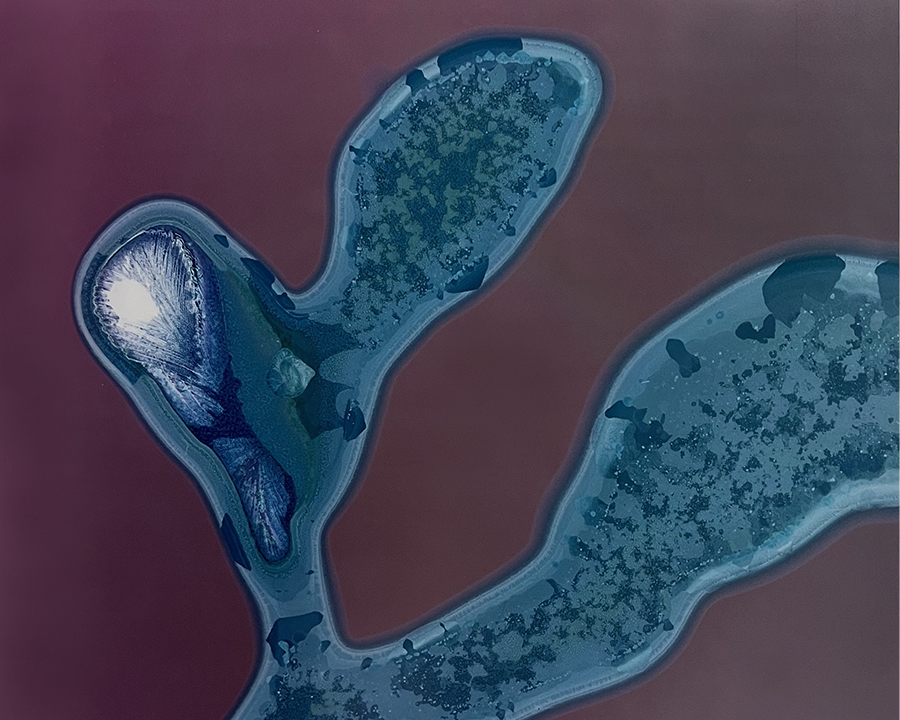Imagine the mind as a movement of information through the nervous system. See all the electrical signals running back and forth through the nerve cells. Around a hundred billion nerve cells traverse the human brain. Each of them making contact with up to a thousand others. However, nerve cells never touch each other; they always remain separated by a tiny gap.
Chemical messengers, known as neurotransmitters, bridge this gap and thus transmit signals from one nerve cell to the next. In Sagacity neurotransmitters are depicted in a unique way: Applied on the light-sensitive side of a developped photographic negative and enlarged in a darkroom, their photo-chemical portraits appear as crystals.
Crystals have served an important role in the arcane wisdoms of alchemy, magic, and ritual. They have been understood as conductors of energetic resonance, as powerful tools that communicate and command magical intention. According to Plato, the Atlanteans used crystals even to read minds and transmit thoughts.
The intensity with which science has dealt with the subject of magic since the 19th century was based on the effort to create clear demarcations between magic and science. The demarcations though proved to be extremely difficult. The discourse used magic to contrast with science and „modern“.
Crystals are the material basis for most of our contemporary technologies. The majority of electronic semiconductors, known as the “chip,” are made of crystalized silicon. Silicon-based machines are being programmed and trained via complex algorithmic protocols and nano-technological advancement to be quick, responsive, dynamic and even “intelligent.” Small LCD (liquid crystal screen) screens are common in portable consumer devices such as digital cameras, watches, calculators, and smartphones.
The first liquid crystals were observed in the 19th century by the pathologist Rudolph Virchow in Myelin, a human tissue membrane that surrounds nerve cell axons. German physicist Otto Lehmann discovered a little later that they are lyotrope, those liquid crystals which are closest to life itself. Many natural philosophers observed that crystals grow when nourished and repair themselves when they are being damaged. „Crystals heal themselves. They take in nourishment. They can be wounded and poisoned. They reproduce themselves. They grow. They move. They are as if alive.“ writes Esther Lesley.
The ancient understanding around crystals – that they were special, that they had power, that they could perform magic – has undergone numerous translations in our modern, demystified, scientific age.
The greek mágos from the indogermanic root *magh- has the meaning „to be able, to help“. It seems crystals are indeed helpers, which can make magic happen to overcome separations. Inside and outside of our bodies: They facilitate connecting.
Text by Ashkan Sepahvand and Sarah Ancelle Schönfeld
*Sagacity as in ‚insights, the ability to understand inner qualities or relationships‘
